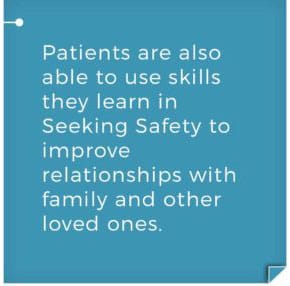- Jul 10
- AddictionAddiction TherapyMental Health TreatmentTreatment
What is Seeking Safety?
Seeking Safety quickly and effectively addresses the root causes of substance use disorders, and helps people feel safe immediately. It is an evidence-based practice with proven results for treating substance use disorders and trauma that is both flexible and empowering. Group and individual treatment using Seeking Safety is present-focused, and does not require patients to vividly recall and discuss painful memories from the past.
Seeking Safety Treatment at Gateway
Seeking Safety is a core part of the clinical model at Gateway, and can be found in most Residential and Outpatient programs. Gateway is a leader in training and fidelity-monihttps://www.gatewayfoundation.org/how-to-prepare-for-residential-treatment/toring to ensure that Seeking Safety as practiced onsite reproduces the model used in clinical trials, in order to get the same results. Seeking Safety treats co-occurring disorders in a truly integrated manner, making it a perfect fit for our industry-leading and independently rated Dual Diagnosis Enhanced (DDE) programs.
What are the Benefits of Seeking Safety?

What Does the Research Say?
- Seeking Safety is supported by an extensive body of scientific research that supports its efficacy in treating both trauma and substance use disorders.
- Seeking Safety is listed on the National Registry of Evidence-Based Practices and Programs (NREPP), identified as strongly supported by research by the American Psychological Association and identified as a Level A program by the International Society for Traumatic Stress Studies.
- For people seeking treatment for substance use disorders, lifetime Post-Traumatic Stress Disorder (PTSD) prevalence rates range between 30 and 60 percent.
“It is never too late to be what you might have been.” —George Eliot
Every Seeking Safety group begins with a quote, including the words of the writer George Eliot. Seeking Safety at Gateway helps people to be who they want to be. Call us at 877.505.4673 to learn more.


